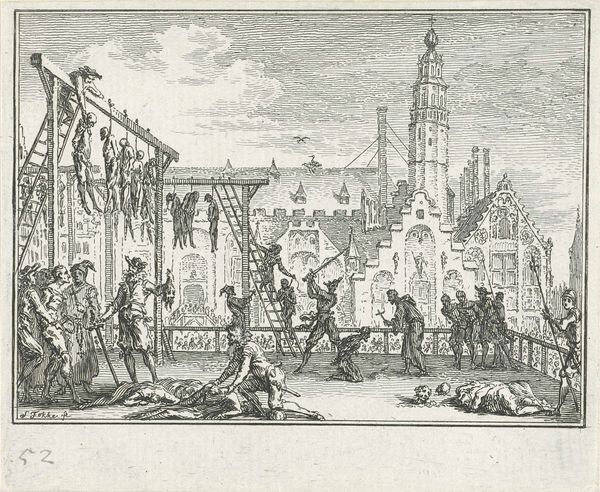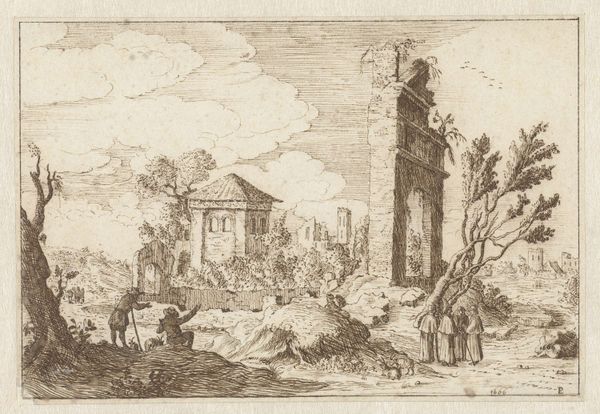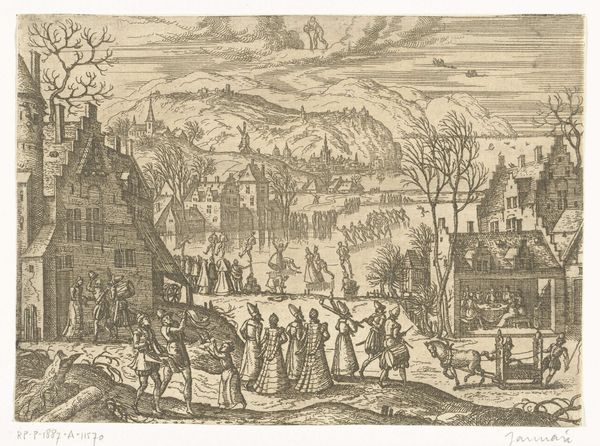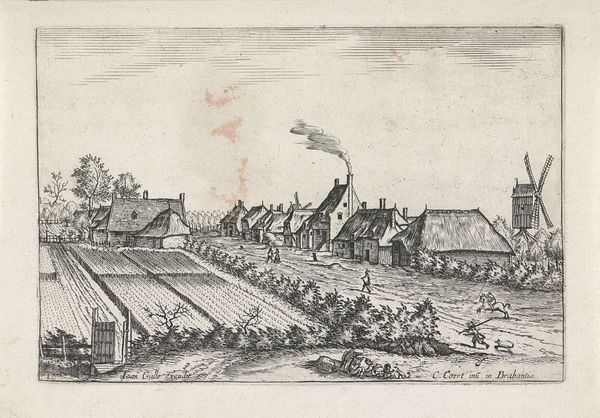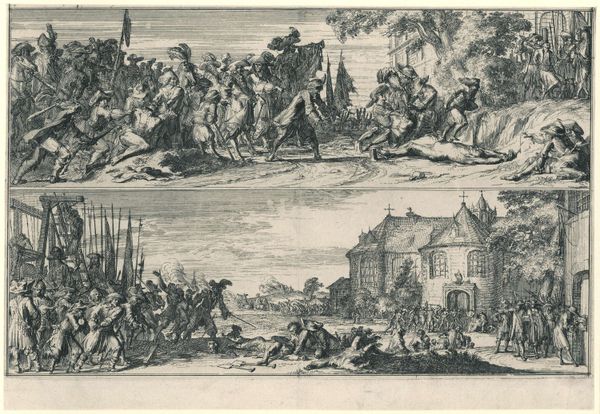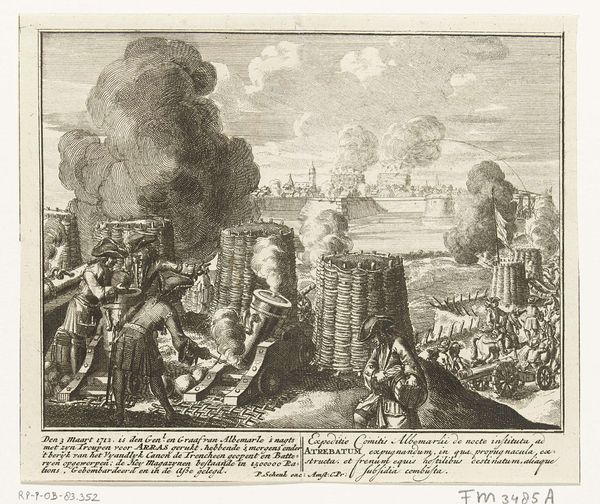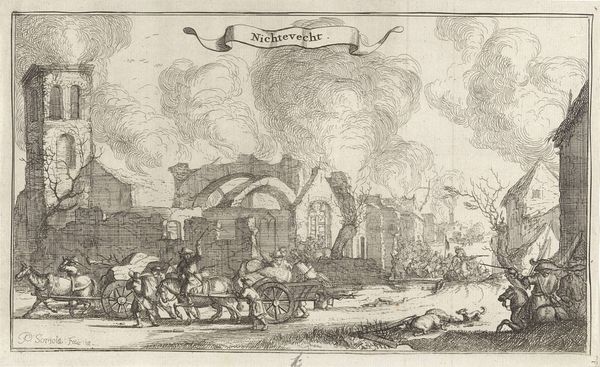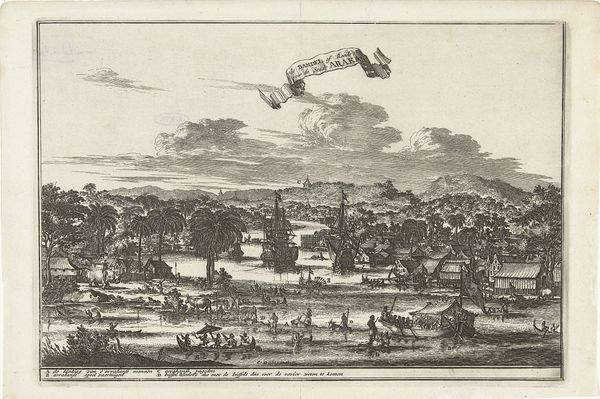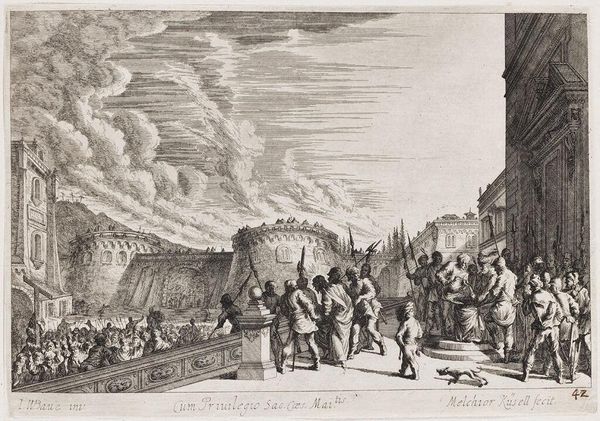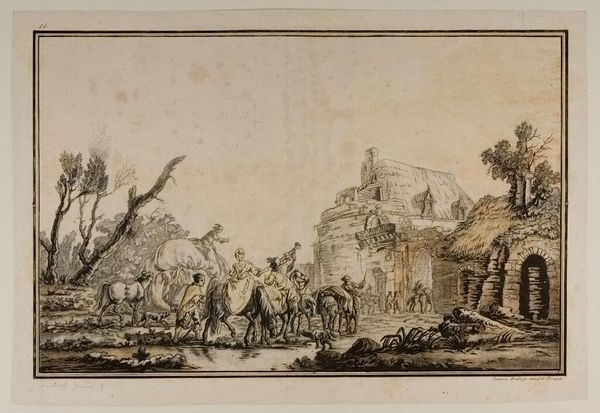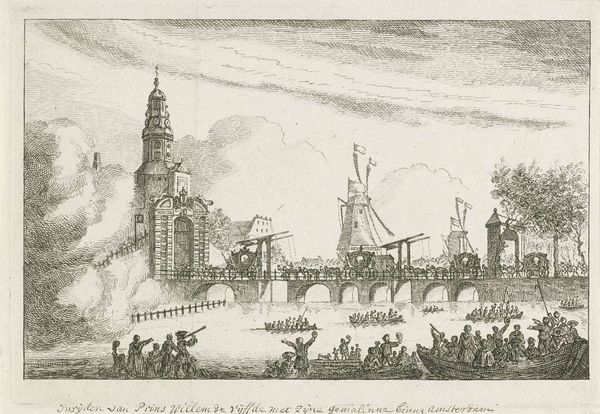
drawing, print, ink, engraving
#
drawing
#
baroque
# print
#
pen sketch
#
pencil sketch
#
landscape
#
ink
#
pen-ink sketch
#
pen work
#
sketchbook drawing
#
cityscape
#
engraving
Dimensions: height 162 mm, width 258 mm
Copyright: Rijks Museum: Open Domain
Editor: This engraving, "Abcoude, verwoest door de Fransen in 1672," created between 1672 and 1676 by Isaac Sorious, really captures a sense of devastation. It's incredibly detailed, almost like a news report from the past. How do we unpack the story behind such a dramatic image? Curator: This print is a potent reminder of the very real violence inflicted during the Franco-Dutch War. Abcoude was indeed sacked by the French army in 1672, a year the Dutch remember as the "Rampjaar," or disaster year. Prints like these served as both documentation and propaganda, shaping public memory. Editor: Propaganda, really? Curator: Absolutely. Consider the visual choices. The artist is emphasizing the scale of destruction – note the thick plumes of smoke engulfing the buildings. By focusing on civilian structures like the church, the print stirs anti-French sentiment by highlighting the violation of Dutch society and faith. The very act of creating and distributing this image, years after the event, aimed to keep the memory of French aggression alive. It is interesting, isn't it? Editor: So, it’s not just about historical accuracy, but about influencing public opinion. Were there any other ways the public engaged with art at the time? Curator: These prints would have been circulated widely, influencing popular perceptions of the war and Dutch identity. They highlight a society under duress. The act of viewing becomes a political act, reinforcing national solidarity. We have to consider these images alongside other forms of cultural production and civic life to understand their impact. Editor: That’s fascinating. It changes how I see the artwork, thinking about it less as a neutral record and more as a politically charged statement. Curator: Exactly! It reveals the complex interplay between art, politics, and public memory in the Dutch Golden Age. These prints played an important part in creating lasting impressions about this period. Editor: I’ll definitely be looking at art through a different lens from now on. Thanks for your insight!
Comments
No comments
Be the first to comment and join the conversation on the ultimate creative platform.
